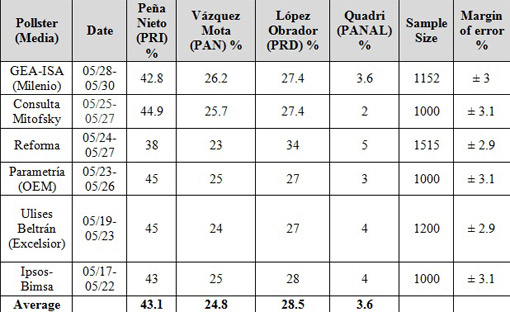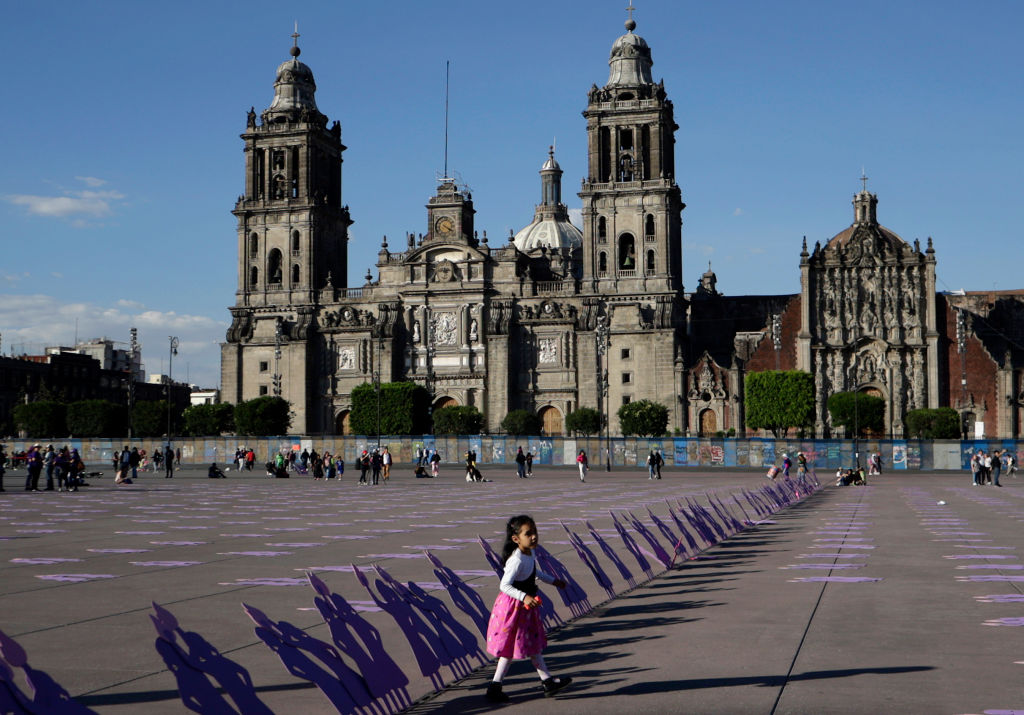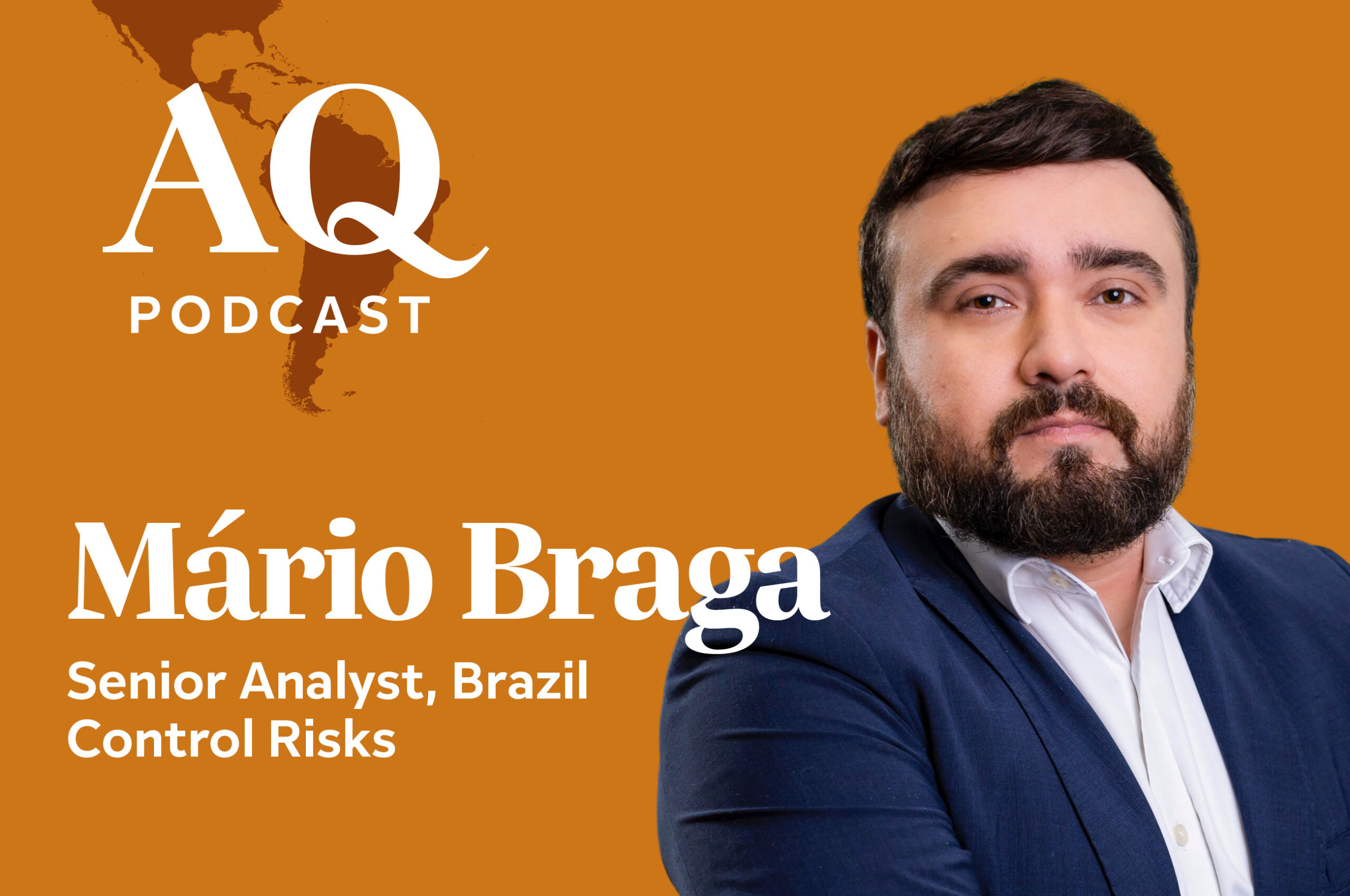Mexico’s Elections: The Presidency and Beyond
Mexico’s Elections: The Presidency and Beyond
The polls predict victory for Enrique Peña Nieto. But with the PRI poised for a pick-up in congressional seats, the implications of the July 1 elections will go far beyond the presidential race.
On July 1, Mexicans will elect their third government since the Partido Revolucionario Institucional (PRI) relinquished their grip on Los Pinos after 71 years ruling the country. But as election day approaches, anxiety and polarization continue to grow among both the electorate and political class. More importantly, this uncertainty stirs concern about the future of democracy. Beyond electing a new executive and legislative branch, this election will test Mexico’s democratization process.
With four weeks of the campaign remaining, PRI candidate Enrique Peña Nieto remains the frontrunner. (SEE TABLE 1) He has lost less than five percentage points since the official campaign began on March 30, in an effort largely free of both mistakes and substance. Josefina Vázquez Mota, candidate of the incumbent Partido Acción Nacional (PAN) and the first woman to run for president for a major national party, has also lost five percentage points since then in a campaign riddled with gaffes. Second-time challenger Andrés Manuel López Obrador (AMLO) from the Partido de la Revolución Democrática (PRD) is the only candidate who has gained some additional momentum—as much as seven percentage points—by conveying a message of tolerance on the stump. This was necessary for his political brand, after being blamed for sparking national polarization when he narrowly lost (by less than one percentage point) the 2006 election to President Felipe Calderón (PAN).
Table 1. Poll of Polls: Mexican Presidential Election

Tabulated by the author, with data from ADNPolítico.com.
Peña Nieto has managed to preserve his telegenic image and leads his closest rival by almost 15 points: 43.1 percent to 28.5 percent. Trailing candidates desperately need major boosts to their candidacies. Although these gains seem unlikely, some challengers have tried to make-up some ground by attaching themselves to student calls for a more vibrant democracy. Still, these student protests—led by the Mexico City-based #Yosoy132 operation—refuse to openly support any presidential candidate.
López Obrador, the distant second-place candidate, is attempting to attract the anti-PRI vote by positioning himself as the most viable alternative candidate. However, polls suggest that the PRI’s centrist position makes Peña Nieto the second choice for a majority of voters from both the Right and Left. While 20 percent of the electorate remains undecided, these voters are less likely to turn out on election day or to alter the current scenario by supporting a single candidate.
Beyond the presidential contest, the most relevant issue this election season is the majority of seats in Congress that the PRI is expected to gain. All 628 seats in Mexico’s bicameral congress are up for election: 500 in the lower chamber and 128 in the upper chamber.
The PRI-led coalition, which includes the Partido Verde Ecologista de México (PVEM), is currently leading the congressional polls with 49 percent approval; the PAN and the PRD are tied at a distant 25 percent. In the current Congress, the PRI coalition holds 265 seats in the lower chamber; the PAN has 140 seats and the PRD holds 70. In the Senate, the PRI holds 39 seats, trailing the PAN (49 seats) but leading the PRD (22).
If the polls hold true on election day, the PRI and PRD would increase their presence in Congress while the incumbent PAN would lose seats. Entirely focused on the presidential race, the PAN and PRD are missing an opportunity to close the gap in congressional seats instead using legislative campaign resources for their presidential candidacies.
While divided government has often been the status quo in U.S. politics—playing a role in ensuring accountability and checking the executive branch’s power—it has been an Achilles’ heel for Mexican democracy. Cooperation between the executive and legislature is possible on some issues, but congressional gridlock hinders the passage of important reforms to the tax system, labor market and energy sector. The PRI is running this year on the basis of overcoming this problem.
But optimism for reform should be guarded even though a Peña Nieto government would have a better chance to build centrist legislative coalitions.
Read the full article at www.AmericasQuarterly.org.
Edgar Moreno is a graduate student of public administration at Columbia University. He has served as chief speechwriter in Mexico’s Ministry of the Economy and speechwriter to the President of Mexico.







